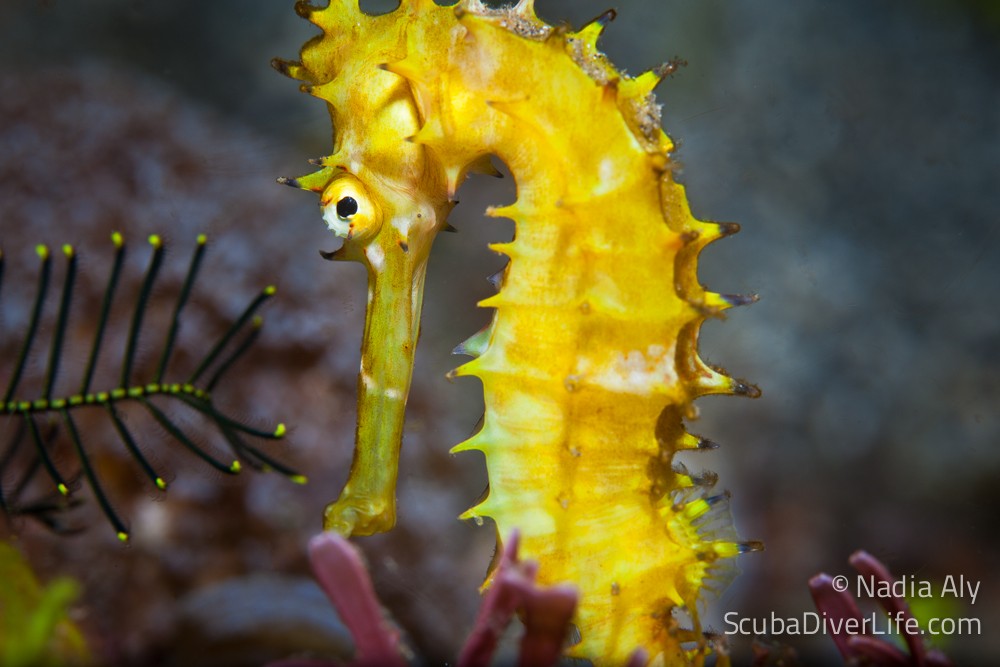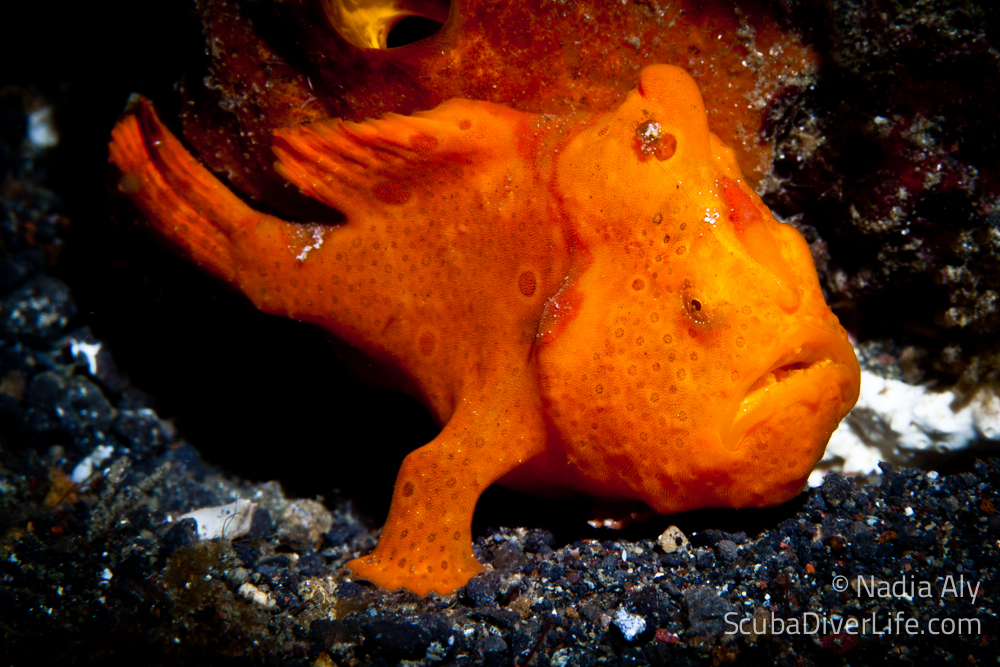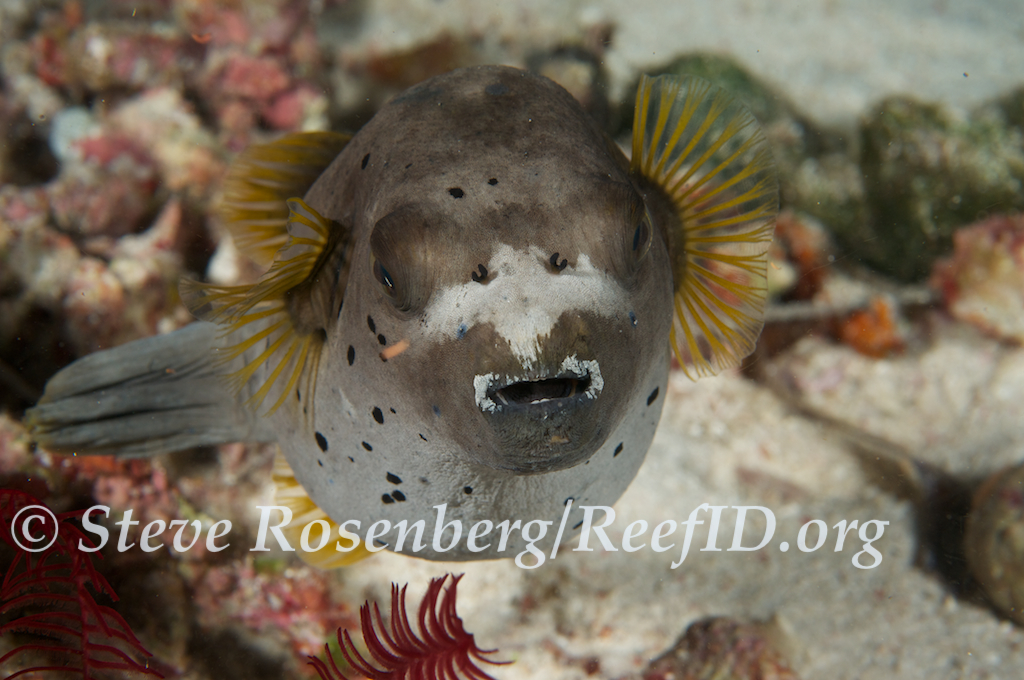Ten Must-See Fish
The ocean holds a countless number of must-see fish for many divers, but where are the best places to see the most popular ones? Red on for tips on where to spot ten must-see fish.
Mola mola (Sunfish)
This is one strange looking fish, and if you happen to be on the surface like I was the first time you see one, you’re probably not going to understand what you’re seeing. They often come to the surface and ‘sun’ themselves – hence their nickname – by swimming on their side and exposing the large part of their body to the warm sunlight. It’s thought that they do this to raise their body temperature in preparation of a deep dive or following one, but regardless of the reasons it’s kind of strange to see. It can look like a fish in distress, or a shark. So if you see a single fin on the surface, kind of swimming around in circles acting weird, it might well be a mola mola!
They are found all over the world in tropical waters, but are also known to hang out as deep as 2,000 feet. Occasionally they can be seen in pairs but they’re generally found alone in waters warmer than 50 °F in open water or near kelp beds. Adults are huge – 5 ft x 8 ft and weighing over 2000 pounds – so they’re hard to miss if they’re around. And since they require such enormous amounts of food to survive, if you see a mola mola you’re in an area rich with food.
Clownfish/Anemonefish
To find Nemo, you need to head to the Indian and Pacific oceans. The warmer waters of places like the Red Sea and the Great Barrier Reef are where these cute little guys call home. And I do mean guys. Did you know that all clownfish are born male? They can permanently become female if they choose, but only do so if they’re going to be the queen of the pack. I mean, why bother unless you’re going to rule the roost, right?
Easily identifiable by their orange body and white stripes, clownfish generally hang out in the shallow waters of sheltered reefs or lagoons. In addition to the Red Sea and Great Barrier Reef, Okinawa, Fiji, Thailand, and the Philippines are listed as good spots to check for them. You’re not going to find them anywhere in the Atlantic, Caribbean or Mediterranean.
Seahorse
These guys are the treasure of so many picture hunters and are thought to be very rare due to so few sightings. They are actually found in relative abundance all over the world in sheltered areas like coral reefs, sea grass beds, and mangroves. Their adept camouflage makes them oh so easy to miss, which means you’ve probably seen them and just didn’t know it. They can change colors and even grow appendages to blend into their surroundings. But, here’s a tip for finding them: their tail is the easiest thing to recognize. Next time you’re on a shallow reef or sea grass bed, look extra closely for curled tails wrapped around blades of grass or coral.

I’ve only seen a seahorse once and when I went to grab my buddy and show him, I couldn’t find it again. And that was with knowing exactly where it had been! They’re masters of disguise and pretty small to boot. But just keep looking.
Rainbow parrotfish
These large beauties are found in the Caribbean and Western Atlantic from Florida to Argentina. While all members of the parrotfish family are lovely to look at, the Rainbow stands head and tail above the rest due to vibrant coloring and sheer size: they can grow to nearly 4 feet in length. Look around sea grass beds in Bermuda, or coral reefs in the Bahamas, or check the mangroves in Florida. While their range is as sizeable as they are, they are a rare find and most reports of sightings are in Bermuda. They’ve been seen as deep as 75 feet, and in schools as large as 30 individuals. At night, they hide in crevices and can be even harder to find.
Queen angelfish
What has a blue body, yellow tail, and striking purple and orange highlights? Why, a Queen angelfish of course! The Florida Keys are a popular place to see these large, electric blue reef dwellers. They’re very shy and prefer the warm waters of the Caribbean and Western Atlantic, but can have a range among reefs through the Gulf of Mexico and as far south as Brazil. Often seen in pairs, these queens can grow to nearly 20 inches in length and can sometimes be hard to spot among other brightly colored coral.
Frogfish
Another one with a large range of habitation is the Frogfish. They prefer tropical and subtropical waters in the Atlantic, Pacific, Indian Ocean, and Red Sea. Indonesia and the entire Indo-Pacific region seems to have the most types and concentration of these cute guys. Generally you can find them on the ocean floor near coral reefs, or rock reefs and rarely any deeper than 300 feet. Look for a hole in the ground with some eyes peering up at you.

Moorish idol
A very large range of habitation makes this fish a relatively easy find. From the Gulf of California to Peru, east Africa, Indian Ocean, Hawaii, southern Japan and Micronesia you can find Moorish idols on shallow, flat reefs in tropical and subtropical waters. They’re most often alone but can be seen in pairs or schools. At night they hang out on the bottom and dim down their colors a bit. If you’re near Africa though, be careful you don’t mistake the False Morrish Idol for the real one.
Pufferfish
You know where to go to see these guys? Manzanillo, Mexico. That’s where I did my OWSI work and I saw more pufferfish than I could ever hope to see. So many in fact, that it has ruined me for pufferfish as I swore when I left there that I never wanted to see another puffer in my life. Okay, not really, but you get my point. There are a lot there!
They can be found in just about any tropical and subtropical ocean waters, and occasionally in brackish. There have even been reports of seeing them in fresh water. Really, they’re all over the world in tropical waters. Just, please don’t try to eat them.

Mandarinfish
Here’s another must-see fish that prefers sheltered areas like lagoons and inshore reefs in the Western Pacific, Malaysia, Indonesia, the Philippines, and Australia. They tend to be pretty reclusive, especially during the day, but can be found navigating between coral branches or even perched on top of them. Look for broken coral or even dead coral as that seems to be a favored habitat for them. If you see one, move cautiously. Even a large breath could scare these extremely shy guys away.
Clown triggerfish
Another gorgeous Indo-Pacific fish is the clown triggerfish. Most commonly found around coral reefs (no surprise there!), it does prefer the outer reef habitats. When threatened, these triggerfish will retreat and hide in crevices, though they aren’t generally thought of as shy. From South Africa to the Central Pacific and through the Indo-Pacific and Japan, these guys can be found wherever shellfish and other invertebrates are from shallow depths onward to 250 feet. While their range is a relatively large tropical and temperate area, clown triggerfish are relatively rare finds and can be difficult to see despite their size and colors.

